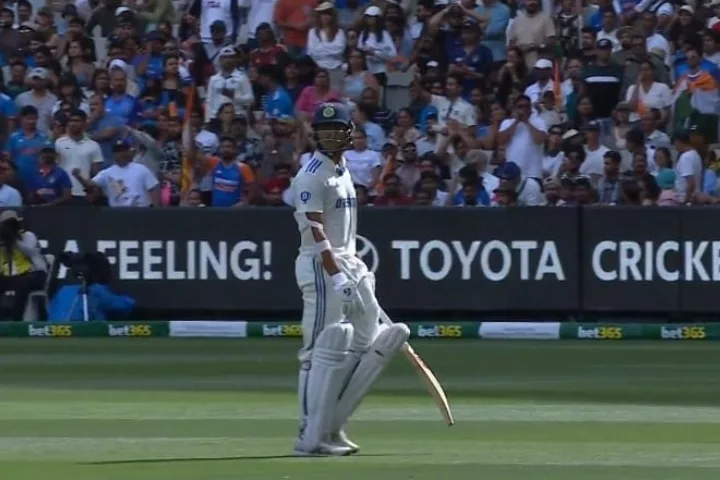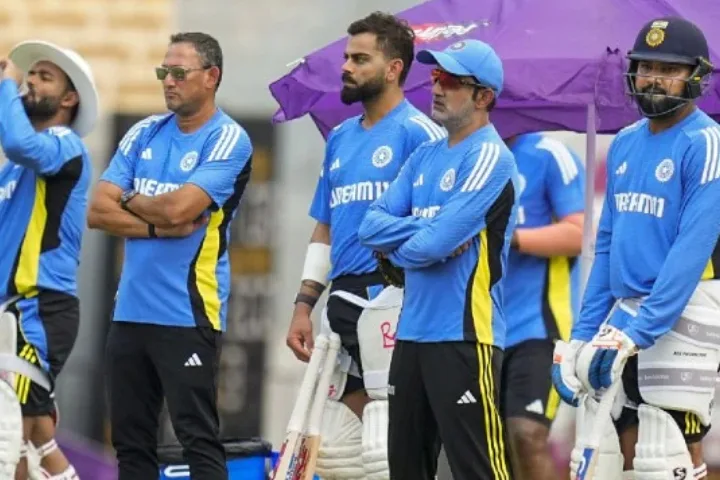The fifth day of the Boxing Day Test at the Melbourne Cricket Ground (MCG) brought a lot of drama when Indian opener Yashasvi Jaiswal was dismissed in a controversial decision. The third umpire overturned the on-field decision, even though the Snickometer showed no spike, sparking heated debate among players, pundits and fans alike.
Jaiswal, who had been a rock for India, was visibly upset as he departed after a hard-fought 84 runs off 208 balls. His innings had kept India’s hopes alive, making the decision a bitter pill to swallow for the Indian camp. It wasn’t just frustration: it reignited questions about how consistent technology-assisted officiating really is.
Dismissal: a closer look
The controversy unfolded in the 71st over of India’s chase. Pat Cummins bowled a short ball down the leg side and Jaiswal, attempting a shot, seemed to miss completely. Australia, however, appealed loudly, claiming a slight advantage. The on-field umpire said “not out”, but Cummins was not convinced and went to check.
This is where things got complicated. The Snickometer showed no spike as the ball passed the bat, but the third umpire noted a slight deviation. That was deemed “conclusive evidence,” overturning the decision on the field and sending Jaiswal back to the pavilion.
Jaiswal was not happy and it showed. He exchanged words with the umpires on the field before leaving, as the Indian crowd at the MCG erupted in disbelief. On the other hand, Australian fans celebrated the progress.
Expert opinions: divided as always
Former ICC elite referee Simon Taufel weighed in during Channel 7’s coverage, supporting the decision. “From my perspective, it was out,” Taufel said. He explained that the third referee relied on the deviation, which was considered sufficient evidence, although the Snickometer did not show an audio spike. According to Taufel, visual evidence can trump audio under current protocols.
But this didn’t sit well with many fans and experts, who questioned whether the rules were being applied consistently. Social media lit up with demands for greater transparency in the use of technology for these high-risk calls.
Jaiswal’s performance: determination and redemption
Controversy aside, Jaiswal’s innings was a masterclass in resilience. Walking under pressure after the first few wickets, he anchored the Indian chase with remarkable calm, facing 208 balls in his 84 runs. This knock was even more impressive considering that the young opener had missed three critical catches in the match.
Watch: Sam Konstas mocks Virat Kohli, sparks viral moment at MCG
One of those misses allowed Marnus Labuschagne to pile up more runs for Australia, increasing their lead. But Jaiswal redeemed himself with the bat, frustrating Australia’s bowlers and earning the respect of the crowd, until the controversial dismissal cut short his innings.
A moment that changes the rules of the game
Jaiswal’s wicket turned the tide. His departure left India’s lower order exposed to Australia’s aggressive bowling attack, and the momentum quickly shifted to the hosts.
But rather than focusing solely on cricket, much of the post-match discussion revolved around the controversial dismissal. Fans demanded greater consistency in how technology is used to make such crucial decisions. In the end, the drama overshadowed what had been an exciting day of Test cricket.
Stay up to date with all the cricket action, follow Cricadio in WhatsApp, Facebook, Twitter, Telegram and instagram

 Workout
Workout
 Meditation
Meditation




 Contact Us
Contact Us











